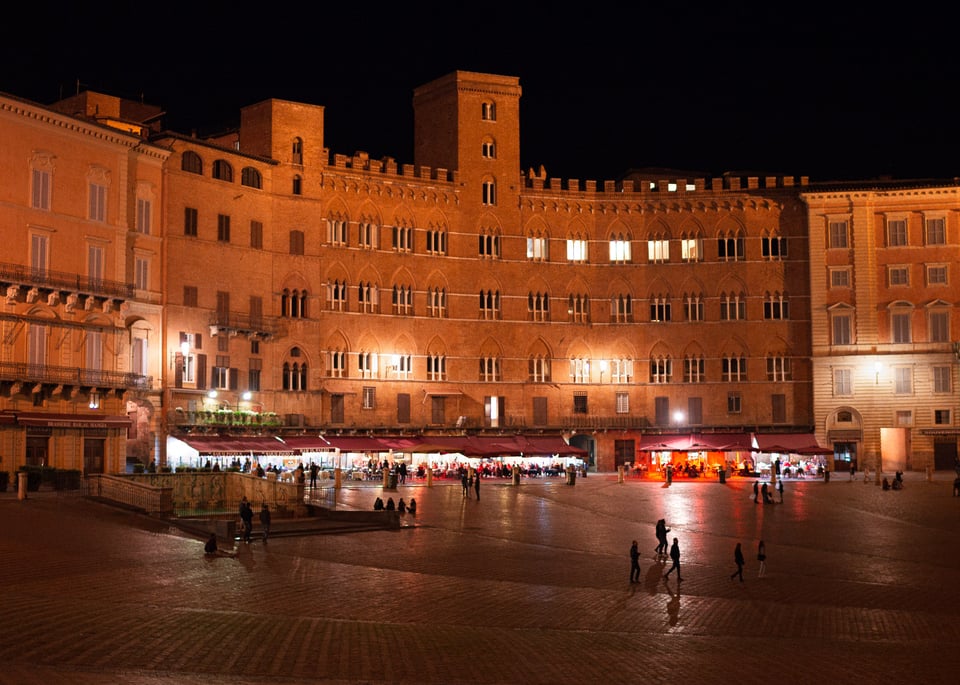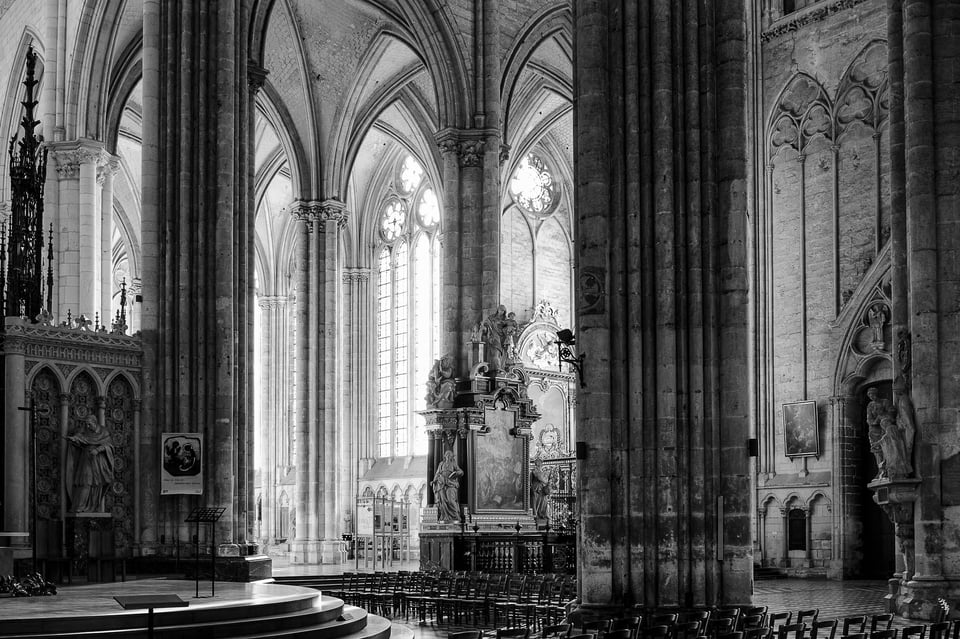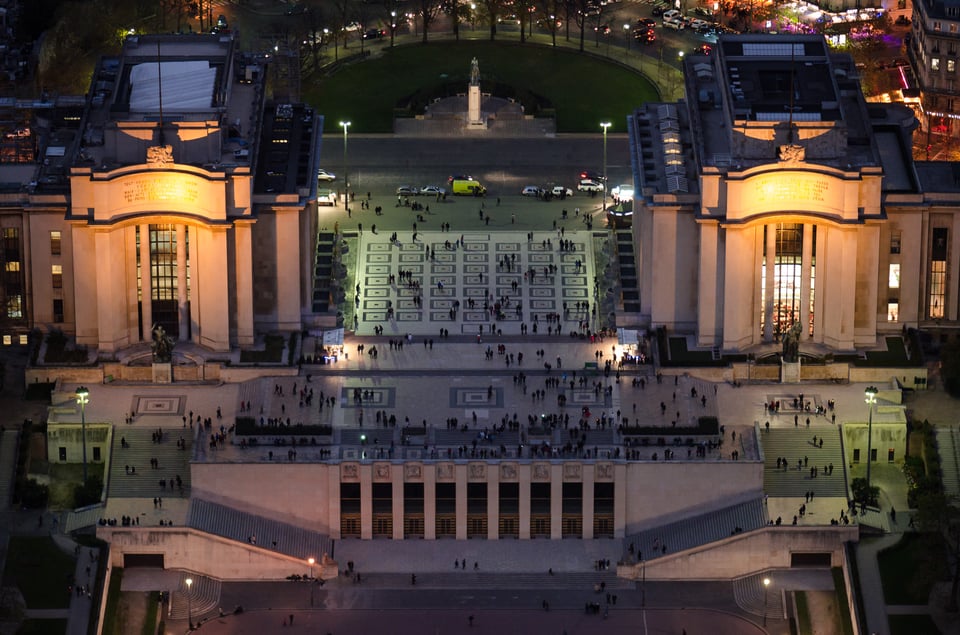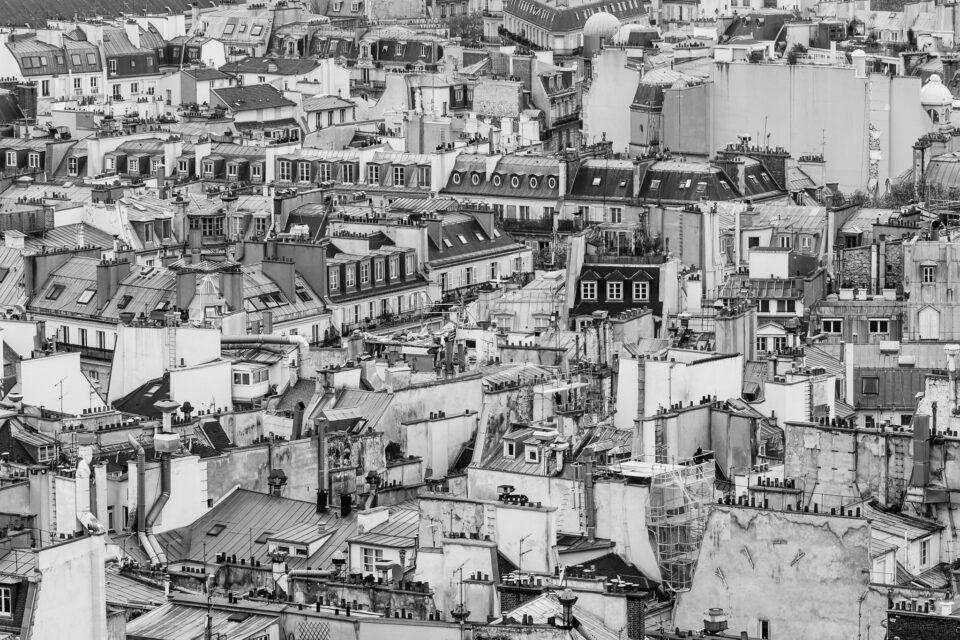ما مدى الفجوة بين الأطوال البؤرية؟
How Much of a Gap Between Focal Lengths Is Too Much?
عندما تقوم بتجميع مجموعة من العدسات، قد يكون من المغري محاولة تغطية جميع الأطوال البؤرية المهمة دون أي فجوات بينها. تعد المجموعة المكونة من عدسات 14-24 مم و24-70 مم و70-200 مم من العدسات الشائعة. وكذلك المجموعات المتداخلة، مثل 16-35 مم، و24-105 مم، و70-200 مم.
تعد هذه العدسات رائعة في معظم الأوقات، ومن السهل إضافة عدسات أخرى مثل عدسة أساسية مقاس 50 مم f/1.4 أو عدسة مقربة فائقة لجعلها أكثر تنوعًا. ولكن لمجرد أن هذه المجموعات المعينة لا تحتوي على أي فجوات بين الأطوال البؤرية، لا يعني أن هذه ميزة ضرورية لمجموعة عدسات جيدة.
من الناحية العملية، ليست هناك حاجة كبيرة لتجنب المسافات الفارغة بين الأطوال البؤرية طالما أنها ليست متباعدة جدًا. لنأخذ على سبيل المثال مجموعة عدسات ثلاثية شائعة أخرى: عدسة تكبير مقاس 16-35 مم، وكاميرا أساسية مقاس 50 مم، وكاميرا تكبير مقاس 70-200 مم. على الرغم من أن هذه المجموعة تفتقد أطوالًا بؤرية تتراوح بين 35 مم و50 مم، بالإضافة إلى 50 مم و70 مم، إلا أن هذه الفجوات صغيرة جدًا لدرجة أن الكثير من المصورين لن يفوتهم أبدًا.
ليس من غير المألوف أن نذهب إلى أبعد من ذلك أيضًا. تحظى مجموعة العدسات المكونة من 35 مم f / 1.4 و 85 مم f / 1.4 (أو بدائلها f / 1.8 لأولئك الذين لديهم ميزانية محدودة) بشعبية كبيرة بين المصورين الفوتوغرافيين والمصورين الصحفيين وغيرهم ممن يحتاجون إلى الحد الأقصى من قدرات جمع الضوء. يضيف بعض المصورين عدسة أولية مقاس 50 مم لإكمال المجموعة، لكن الكثير منهم لا يفعلون ذلك. فقط 35 ملم و 85 ملم يمكن أن يكون كافياً.
كاميرا نيكون D800E + 35 مم f/1.8 @ 35 مم، ISO 2500، 1/50، f/1.8
When you’re assembling a set of lenses, it can be tempting to try to cover all the important focal lengths without any gaps between them. A kit of 14-24mm, 24-70mm, and 70-200mm lenses is a popular one. So are sets with overlap, like a 16-35mm, 24-105mm, and 70-200mm.
These are great lenses most of the time, and it’s easy to add other lenses like a 50mm f/1.4 prime or a supertelephoto to make them even more versatile. But just because those particular kits don’t have any gaps between focal lengths doesn’t mean that’s a necessary feature of a good lens set.
In practice, there’s no great need to avoid empty spaces between focal lengths so long as they’re not too far apart. Take another popular three-lens set, for example: a 16-35mm zoom, 50mm prime, and 70-200mm zoom. Although that kit misses focal lengths between 35mm and 50mm, as well as 50mm and 70mm, these gaps are so small that plenty of photographers will never miss them.
It’s hardly uncommon to go more extreme than that, either. A two-lens kit comprised of a 35mm f/1.4 and 85mm f/1.4 (or their f/1.8 alternatives for those on a budget) is fairly popular among portrait photographers, photojournalists, and others needing maximum light-gathering capabilities. Some photographers add a 50mm prime to round out the set, but many don’t. Just 35mm and 85mm can be enough.
 NIKON D800E + 35mm f/1.8 @ 35mm, ISO 2500, 1/50, f/1.8
NIKON D800E + 35mm f/1.8 @ 35mm, ISO 2500, 1/50, f/1.8
How Much of a Gap Between Focal Lengths Is Too Much?
عندما تقوم بتجميع مجموعة من العدسات، قد يكون من المغري محاولة تغطية جميع الأطوال البؤرية المهمة دون أي فجوات بينها. تعد المجموعة المكونة من عدسات 14-24 مم و24-70 مم و70-200 مم من العدسات الشائعة. وكذلك المجموعات المتداخلة، مثل 16-35 مم، و24-105 مم، و70-200 مم.
تعد هذه العدسات رائعة في معظم الأوقات، ومن السهل إضافة عدسات أخرى مثل عدسة أساسية مقاس 50 مم f/1.4 أو عدسة مقربة فائقة لجعلها أكثر تنوعًا. ولكن لمجرد أن هذه المجموعات المعينة لا تحتوي على أي فجوات بين الأطوال البؤرية، لا يعني أن هذه ميزة ضرورية لمجموعة عدسات جيدة.
من الناحية العملية، ليست هناك حاجة كبيرة لتجنب المسافات الفارغة بين الأطوال البؤرية طالما أنها ليست متباعدة جدًا. لنأخذ على سبيل المثال مجموعة عدسات ثلاثية شائعة أخرى: عدسة تكبير مقاس 16-35 مم، وكاميرا أساسية مقاس 50 مم، وكاميرا تكبير مقاس 70-200 مم. على الرغم من أن هذه المجموعة تفتقد أطوالًا بؤرية تتراوح بين 35 مم و50 مم، بالإضافة إلى 50 مم و70 مم، إلا أن هذه الفجوات صغيرة جدًا لدرجة أن الكثير من المصورين لن يفوتهم أبدًا.
ليس من غير المألوف أن نذهب إلى أبعد من ذلك أيضًا. تحظى مجموعة العدسات المكونة من 35 مم f / 1.4 و 85 مم f / 1.4 (أو بدائلها f / 1.8 لأولئك الذين لديهم ميزانية محدودة) بشعبية كبيرة بين المصورين الفوتوغرافيين والمصورين الصحفيين وغيرهم ممن يحتاجون إلى الحد الأقصى من قدرات جمع الضوء. يضيف بعض المصورين عدسة أولية مقاس 50 مم لإكمال المجموعة، لكن الكثير منهم لا يفعلون ذلك. فقط 35 ملم و 85 ملم يمكن أن يكون كافياً.
كاميرا نيكون D800E + 35 مم f/1.8 @ 35 مم، ISO 2500، 1/50، f/1.8
When you’re assembling a set of lenses, it can be tempting to try to cover all the important focal lengths without any gaps between them. A kit of 14-24mm, 24-70mm, and 70-200mm lenses is a popular one. So are sets with overlap, like a 16-35mm, 24-105mm, and 70-200mm.
These are great lenses most of the time, and it’s easy to add other lenses like a 50mm f/1.4 prime or a supertelephoto to make them even more versatile. But just because those particular kits don’t have any gaps between focal lengths doesn’t mean that’s a necessary feature of a good lens set.
In practice, there’s no great need to avoid empty spaces between focal lengths so long as they’re not too far apart. Take another popular three-lens set, for example: a 16-35mm zoom, 50mm prime, and 70-200mm zoom. Although that kit misses focal lengths between 35mm and 50mm, as well as 50mm and 70mm, these gaps are so small that plenty of photographers will never miss them.
It’s hardly uncommon to go more extreme than that, either. A two-lens kit comprised of a 35mm f/1.4 and 85mm f/1.4 (or their f/1.8 alternatives for those on a budget) is fairly popular among portrait photographers, photojournalists, and others needing maximum light-gathering capabilities. Some photographers add a 50mm prime to round out the set, but many don’t. Just 35mm and 85mm can be enough.
 NIKON D800E + 35mm f/1.8 @ 35mm, ISO 2500, 1/50, f/1.8
NIKON D800E + 35mm f/1.8 @ 35mm, ISO 2500, 1/50, f/1.8







تعليق